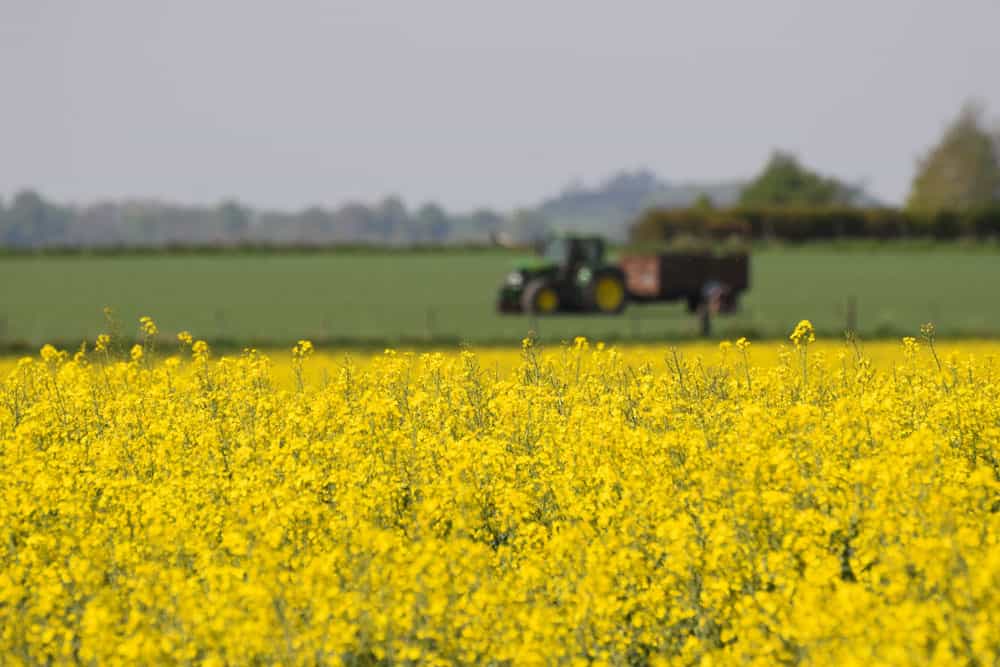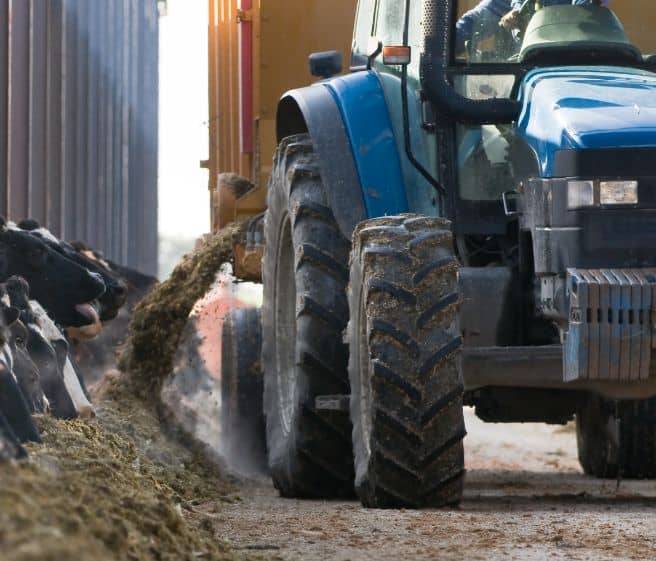With shifting government policies, rising input costs and unpredictable weather, it’s becoming harder to plan ahead with confidence.
Grants and financial support schemes are available, but understanding which ones apply to your farm—and how to apply—can be a challenge in itself.
Many farmers are now being asked to adapt to a system where funding is tied closely to sustainability goals. At the same time, traditional borrowing has become more expensive due to high interest rates, and there’s widespread frustration that food production is being overshadowed by environmental targets.
This has led some farmers to delay investment, reduce borrowing, or avoid taking financial risks altogether.
This article explores how agricultural grants work, what funding is currently available, and how you can use finance strategically to support your farm. Whether you’re navigating policy changes or trying to maintain cash flow in an unpredictable climate, understanding the options can help you make more informed decisions without putting your business at risk.
Understanding Agricultural Grants and Policies
Securing funding for your farm can be a challenge, especially with government policies constantly changing.
Grants can help you invest in new equipment, improve your land, or make your farm more sustainable, but staying on top of available funding options is key.
If you don’t know how to apply for government farm grants, you could miss out on financial support that keeps your business moving forward.
Right now, the UK government offers several grants, including:
- Farming Investment Fund (FIF): Helps pay for farm buildings and equipment.
- Countryside Stewardship Grants: Funds projects that improve soil, water, and wildlife habitats.
- Renewable Energy Grants: Helps farmers install solar panels, wind turbines, or biomass energy systems.
- Laying Hen Housing for Health and Welfare Grant: Provides funding for modern housing that improves bird health, biosecurity, and productivity.
- Calf Housing for Health and Welfare Grant: Supports new and improved calf housing that enhances ventilation and welfare standards.
- Improving Farm Productivity Grant (Round 2): Helps pay for items like robotic systems, renewable energy generation, and equipment that enhances farm efficiency.
- Slurry Infrastructure Grant: Funds slurry stores and equipment to improve nutrient management and reduce pollution.
More than 50,000 farm businesses are benefitting from farming schemes and more money is being spent through the Sustainable Farming Incentive (SFI) than ever.
Government funding for farmers aims to make farms more efficient while also protecting the environment. But since government priorities change, you need to keep up with new rules to continue getting support.
The Role of Sustainable Investment in Modern Farming
Sustainable investment is no longer just an option—it’s a key part of future-proofing your farm.
By investing in renewable energy, water conservation, and eco-friendly equipment, you can reduce operating costs while keeping up with industry sustainability goals.
Switching to energy-efficient machinery or installing solar panels can lower your energy bills and even create an extra income stream by selling excess power back to the grid. Financing green initiatives through tailored finance options can also make it easier to invest in sustainability without waiting for grant approvals.
Many farmers are already taking advantage of these opportunities. Those who have installed solar panels or switched to biomass heating are seeing long-term savings, while others are using government-backed funding to improve soil health and biodiversity.
Keeping up with these trends can ensure your farm remains competitive and financially resilient.
Why Financial Planning is Important for Farmers
Farming is unpredictable. Between fluctuating crop prices, extreme weather, and shifting policies, you need a solid financial plan to keep your business stable.
For years, many farmers relied on the Basic Payment Scheme (BPS), but it’s now being phased out in favour of sustainability-based grants. If you’re not prepared for this change, your farm’s cash flow could take a hit.
Grants are now closely tied to environmental practices, so farmers who protect water, soil, and biodiversity have a better chance of securing funding. If you don’t adapt to these new expectations, you may struggle to access financial support, making it harder to buy new equipment, expand operations, or stay competitive.
Having access to financial solutions like asset-based lending or machinery finance can help bridge gaps when grant funding is uncertain. Being proactive in financial planning will allow you to invest in your farm at the right time, rather than waiting on policy changes.
How to Apply for Government Grants and Explore Other Agricultural Finance Options
Finding the Right Grants
Each farm grant has different rules, and not all farms will qualify for every type of funding. You can check the Rural Payments Agency (RPA) website or ask local agricultural groups for guidance.
It’s also important to plan ahead. Some grants require matching funds, meaning you may need initial capital before you can access funding. Having a clear strategy for securing additional finance, whether through loans or equipment leasing, can make the grant application process smoother.
Submitting a Strong Application
Applying for grants is not always easy. You must show exactly how you will use the money, why you need it, and how your project will help your farm and the environment.
A strong application should include a clear business plan, financial records, and proof of sustainable practices.
Government agencies also want to see that your farm’s plans match broader goals, such as reducing carbon emissions or improving soil health. If your plans don’t align with current priorities, your application might be rejected—so it’s important to prepare thoroughly.
Other Finance Options for Farmers
Government grants don’t always cover everything, and sometimes you need a faster or more flexible funding option. Other ways to finance your farm include:
- Agricultural Machinery Finance: Helps farmers buy modern equipment to improve productivity.
- Renewable Energy Finance: Funds projects like solar or wind power to reduce long-term energy costs.
By combining grants with agricultural finance, you can keep your farm running smoothly without waiting on government funding decisions.
Financing Grant-Eligible Projects
It’s also worth noting that if you’re relying on finance to help fund a project while waiting for a grant, the structure of your loan matters. Because you must legally own the asset before you can claim the grant, funding must be arranged through a loan.
These loans typically involve monthly repayments, but you can include a bullet payment (representing your grant amount) at any point in the agreement. Most farmers choose to do this once the grant money comes in—often around six months into the agreement—though the timing can vary depending on the scheme.
This setup not only satisfies the legal requirement of having ownership of the asset before claiming the grant, but it also helps reduce your monthly payments going forward. While Peregrine Finance does not offer financial advice, we can structure finance agreements to support this process.
What Happens If You Don’t Get Funding?
If you miss out on financial support, it could mean delaying essential upgrades, which can slow down production and increase long-term costs. Outdated machinery leads to higher repair bills, lower efficiency, and difficulties keeping up with competitors.
Stricter environmental regulations also mean that farms not meeting sustainability targets could face penalties or extra costs. Staying informed about industry changes and applying for funding early can help you avoid these challenges.
Best Strategies for Managing Farm Cash Flow
To manage cash flow effectively, you should create a detailed budget that accounts for both peak and low-income periods, ensuring you have enough reserves to cover operating costs year-round.
Diversifying income streams, such as offering agritourism experiences or leasing land for renewable energy projects, can also provide additional financial stability.
When major investments are needed, financing solutions like hire purchase agreements for machinery or asset-based lending can help spread costs over time without depleting working capital. You should also review your financial position regularly, adjusting your strategies based on market conditions and upcoming expenses.
How Farmers Can Navigate High Interest Rates When Securing Finance
Rising interest rates can make securing finance more expensive, putting additional strain on farm budgets.
Understanding how economic trends impact lending can help you make informed financial decisions. One strategy to mitigate rising costs is locking in fixed-rate financing, which provides predictable repayments and protects against further interest rate hikes.
Manage debt effectively by refinancing at lower rates can also reduce financial pressure. Keeping a strong credit profile and working with a trusted agricultural finance provider can ensure access to the best possible terms.
How to Finance Farm Equipment Without Relying on Government Grants
For many farmers, upgrading or replacing essential equipment is a major investment, and relying on government grants is not always an option. Fortunately, several financing solutions are available to help spread the cost over time without placing excessive strain on cash flow.
Tailored financing solutions, such as agricultural machinery finance, also offer flexible repayment options based on farm income cycles.
Preparing for Future Farming Policy Changes
Government policies will continue evolving, focusing on sustainability, carbon reduction, and modern farming technology. If you stay informed and adapt early, you’ll be in a much stronger position to secure funding and keep your business growing.
Tracking industry news, attending farming finance workshops, and maintaining detailed financial records will improve your chances of accessing future grants and investment opportunities.
Get the Right Finance for Your Farm
Peregrine Finance provides tailored agricultural finance solutions to help you invest in equipment and sustainability projects, ensuring you have access to the funding you need—regardless of government policy changes.
Want to explore your farm financing options? Get a quote today!




